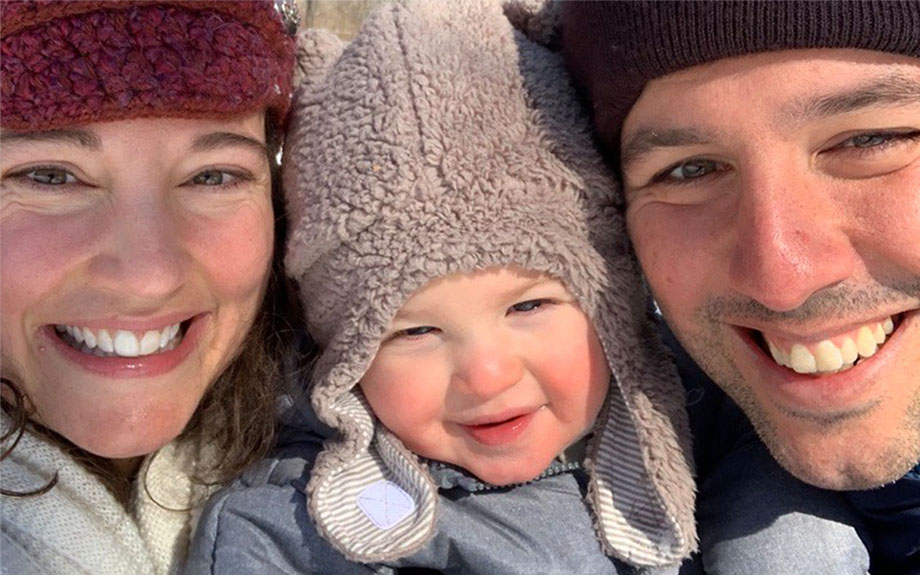Caitie and James Witherspoon began trying for a baby in August of 2017, but after about a year of not being able to conceive (defined as infertility), the family decided to meet with a fertility doctor or Reproductive Endocrinologist (RE). At that point, Caitie had already been diagnosed with polycystic ovary syndrome (PCOS) and had irregular menstrual cycles. Her RE had her administer a combination of high-dose letrozole and a trigger shot to help stimulate ovulation, but she still wasn’t getting pregnant.
Several failed attempts and further testing later, the family found out that James had severe male factor infertility, potentially caused by hernia surgery he had as an infant. It was at this point that they learned that their chances of conceiving naturally would be very low, and so they turned to IVF with ICSI (intracytoplasmic sperm injection).
After undergoing egg retrieval, Caitie and James learned they had 24 eggs, 19 of which were fertilized via ICSI, a procedure in which eggs are fertilized by an embryologist who injects a single sperm into an egg using a tiny needle called a micropipette. After fertilization, 7 embryos went on to become Day 5 embryos or blastocysts. Feeling optimistic about the 7 embryos available for transfer, Caitie, James, and their fertility care team were on the fence initially about PGT-A or preimplantation genetic testing for aneuploidies. “We were both young,” Caitie states. “I was 28 and James was 30”. Considering their age, medical history, and understanding that transferring these 7 embryos without testing could have emotional, physical, and financial implications, the family chose to test their embryos with CooperGenomics’ PGT-A.
“We wanted to have the best chance possible and to avoid transferring embryos that could potentially lead to miscarriage or severe birth defects. Each failed transfer would have cost us an additional $3,000 and we wanted to avoid that while also choosing a healthy embryo”, says Caitie.
“Knowledge is power.”
Their 7 embryos were biopsied by an embryologist at their clinic and were then frozen as they waited for the results. When their PGT-A results came back, they were surprised; 4 of the embryos were aneuploid and 2 embryos were high-level mosaics. These embryos were not recommended for transfer by Caitie’s IVF care team.
However, 1 embryo was euploid, and the family and IVF care team transferred that embryo on July 17, 2019.
“There was A LOT riding on that one tiny healthy embryo,” Caitie reminisces, “Thankfully, she stuck around…literally!. ”
Their daughter, Lucy, was welcomed to the family in April of 2020 and recently celebrated her first birthday. “We can’t imagine life without her. She’s so special and I can’t wait to share her story with her when she’s older” states Caitie.
When looking back at their IVF decisions, Caitie says she is happy they chose to pursue PGT. “You just never know – no matter your age or health! If we hadn’t gone through with testing, we potentially could have spent an additional $18,000 on failed transfers. We are young and have no other medical issues nor are there significant medical issues within our families. We know that some RE’s only suggest PGT-A to older couples or people with other [fertility] issues, but I’m glad it was offered to us, and we went through with it”.
Caitie and James hope to build their family in the future with a second child and recognize that, although they were able to have Lucy, having a child didn’t mean they were no longer infertile. “We don’t know if our path will lead us to a second child – time will tell! However, if we choose to go through IVF again, I wouldn’t hesitate to have our embryos tested. We are truly in awe of what science can offer us and the beautiful gift it helped bring to us”.








